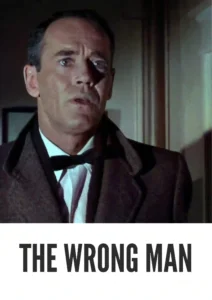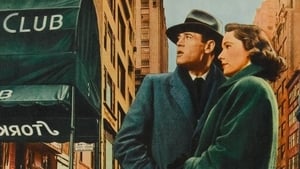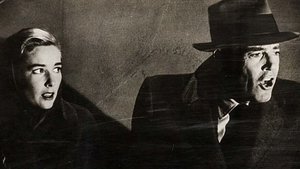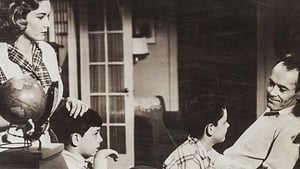Contact: [email protected]
Video Sources 0 Views
- Watch trailer
- The Wrong Man


Synopsis
Table of Contents
ToggleRediscovering Noir: A Comprehensive Review of The Wrong Man 1956

Introduction
In the annals of cinema, few genres possess the allure and mystique of film noir. Defined by its shadowy visuals, morally ambiguous characters, and tales of crime and deception, noir captivates audiences with its atmospheric storytelling and evocative imagery. One such masterpiece that exemplifies the essence of noir is “The Wrong Man” (1956), directed by the legendary Alfred Hitchcock. This article delves into the intricate layers of this timeless classic, exploring its narrative depth, iconic performances, and enduring legacy within the realm of cinema.
Check The Full Colorized Movies List
Check Our Colorized Movies Trailer Channel
Understanding The Wrong Man 1956: Director, Cast, and Genre
Directed by Alfred Hitchcock, “The Wrong Man” (1956) is a quintessential noir thriller that plunges viewers into a world of uncertainty and paranoia. At its helm, Hitchcock masterfully orchestrates a tale of mistaken identity and existential dread, leaving an indelible mark on the genre. Starring Henry Fonda as the unsuspecting protagonist, Manny Balestrero, and Vera Miles as his devoted wife, Rose, the film boasts a stellar cast whose performances elevate the narrative to new heights. Within the realm of cinema, “The Wrong Man” occupies a unique space, blending elements of crime drama, psychological thriller, and noir sensibilities to create a cinematic experience that is both timeless and unforgettable.
Exploring the World of The Wrong Man 1956: Plot and Characters
Set against the backdrop of 1950s New York City, “The Wrong Man” follows the harrowing ordeal of Manny Balestrero, a hardworking musician who finds himself ensnared in a web of mistaken identity. When Manny is falsely accused of committing a series of robberies, he must navigate the labyrinthine corridors of the criminal justice system to prove his innocence and reclaim his life. As the narrative unfolds, viewers are drawn into Manny’s world, sharing in his anguish, fear, and desperate quest for redemption. Alongside Manny, his wife Rose emerges as a beacon of hope and resilience, standing by his side through the darkest of times.
The Art of Film Colorization
In recent years, advancements in film colorization technology have breathed new life into classic cinema, offering audiences the opportunity to experience beloved films in vibrant new ways. With “The Wrong Man” (1956), the transition to colorization presents a unique opportunity to rediscover Hitchcock’s noir masterpiece through a fresh lens. By infusing the film with color, viewers are transported to the bustling streets of 1950s New York City, immersing themselves in the rich tapestry of sights and sounds that define the era. From the neon-lit alleys to the dimly lit interiors, colorization adds a layer of depth and realism to Hitchcock’s meticulously crafted world, inviting audiences to explore its intricacies with renewed fascination.
Early Colored Films: A Brief History
The history of colorization in cinema is a story of innovation, experimentation, and technological advancement. From the earliest hand-tinted frames to the advent of digital colorization techniques, filmmakers have long sought to harness the power of color to enhance the visual impact of their stories. With each new technological breakthrough, the boundaries of what is possible in cinema continue to expand, paving the way for a new era of creativity and expression.
The Wrong Man 1956 and Its Early Colored Version
The decision to release “The Wrong Man” (1956) in a colorized format represents a bold reimagining of a classic film for a modern audience. By embracing colorization, Hitchcock’s noir masterpiece undergoes a transformation, infusing the narrative with a newfound vibrancy and vitality. From the stark contrast of light and shadow to the subtle nuances of color and texture, the film’s visual palette is enriched, offering viewers a fresh perspective on a timeless tale of suspense and intrigue.
The Debate Over Film Colorization
While the advent of colorization has sparked debate among purists and cinephiles, its role in preserving and revitalizing classic films cannot be understated. By breathing new life into beloved cinematic treasures such as “The Wrong Man” (1956), colorization ensures that these timeless works of art remain accessible to audiences for generations to come. While some may argue that colorization detracts from the original aesthetic and artistic integrity of a film, others see it as a way to breathe new life into beloved classics and introduce them to new audiences.
Examining The Wrong Man 1956 as an Early Colored Film
As “The Wrong Man” (1956) undergoes the transition to colorization, viewers are presented with a fresh perspective on Hitchcock’s iconic noir thriller. From the vivid hues of the city streets to the muted tones of the courtroom, colorization adds a layer of depth and dimension to the film’s visual narrative, enhancing its overall impact and immersing audiences in its atmospheric world. While purists may lament the departure from the original black-and-white aesthetic, others see colorization as an opportunity to rediscover and reevaluate classic films in a new light.
Influence and Legacy: The Wrong Man 1956’s Impact on Cinema
“The Wrong Man” (1956) stands as a testament to Alfred Hitchcock’s enduring legacy as one of cinema’s greatest auteurs. With its masterful direction, taut suspense, and unforgettable performances, the film continues to captivate audiences and inspire filmmakers across the globe. From its exploration of themes such as identity, guilt, and redemption to its innovative use of visual storytelling techniques, “The Wrong Man” remains a touchstone of cinematic excellence and a testament to the enduring power of noir storytelling.
Director’s Cinematic Legacy: Beyond The Wrong Man 1956
Alfred Hitchcock’s influence on the world of cinema extends far beyond “The Wrong Man” (1956). As one of the most prolific and innovative directors in film history, Hitchcock’s body of work continues to inspire generations of filmmakers and storytellers. From his pioneering use of suspense and tension to his groundbreaking visual techniques, Hitchcock’s cinematic legacy endures, shaping the course of filmmaking and leaving an indelible mark on the medium.
Themes Explored in The Wrong Man 1956
At its core, “The Wrong Man” (1956) delves into the timeless themes of innocence, guilt, and the fragility of truth. Through its exploration of Manny Balestrero’s ordeal and his desperate quest for justice, the film offers a poignant reflection on the complexities of the human condition and the enduring search for redemption. As Manny grapples with the consequences of a wrongful accusation, viewers are forced to confront their own assumptions and prejudices, challenging them to reevaluate their perceptions of justice and morality.
Reception and Controversy Surrounding The Wrong Man 1956
Upon its release, “The Wrong Man” (1956) garnered critical acclaim for its gripping narrative, atmospheric direction, and standout performances. However, the decision to colorize the film has sparked debate among cinephiles, with some purists arguing that it detracts from the original aesthetic and artistic integrity of Hitchcock’s vision. Despite the controversy, “The Wrong Man” continues to captivate audiences with its timeless tale of suspense and intrigue, solidifying its status as a classic of the noir genre.
Where to Watch The Wrong Man 1956 Online
For cinephiles eager to experience “The Wrong Man” (1956) in all its glory, the film is readily available for streaming on various platforms. Whether through digital rentals or popular streaming services, audiences can immerse themselves in Hitchcock’s noir masterpiece from the comfort of their own homes, ensuring that its legacy endures for generations to come.
FAQs About The Wrong Man 1956
Q: Is colorization faithful to the original vision of The Wrong Man 1956?
- A: While colorization offers a fresh perspective on the film, some purists argue that it detracts from the original aesthetic and artistic integrity of the black-and-white version. Ultimately, the decision to embrace colorization is a matter of personal preference.
Q: What themes are explored in The Wrong Man 1956?
- A: “The Wrong Man” (1956) delves into themes of mistaken identity, injustice, and the search for truth in a world defined by uncertainty and doubt. Through its exploration of these universal themes, the film offers a thought-provoking reflection on the complexities of the human experience.
Conclusion
In conclusion, “The Wrong Man” (1956) stands as a timeless classic of the noir genre, captivating audiences with its gripping narrative, unforgettable characters, and stylish direction. Whether experienced in its original black-and-white format or through the lens of colorization, the film continues to resonate with viewers, offering a poignant reflection on the human condition and the enduring allure of cinematic storytelling. As we reflect on the enduring legacy of “The Wrong Man” (1956), we are reminded of the power of cinema to transport us to worlds beyond our own and to explore the depths of the human soul with unrivaled depth and complexity.




















